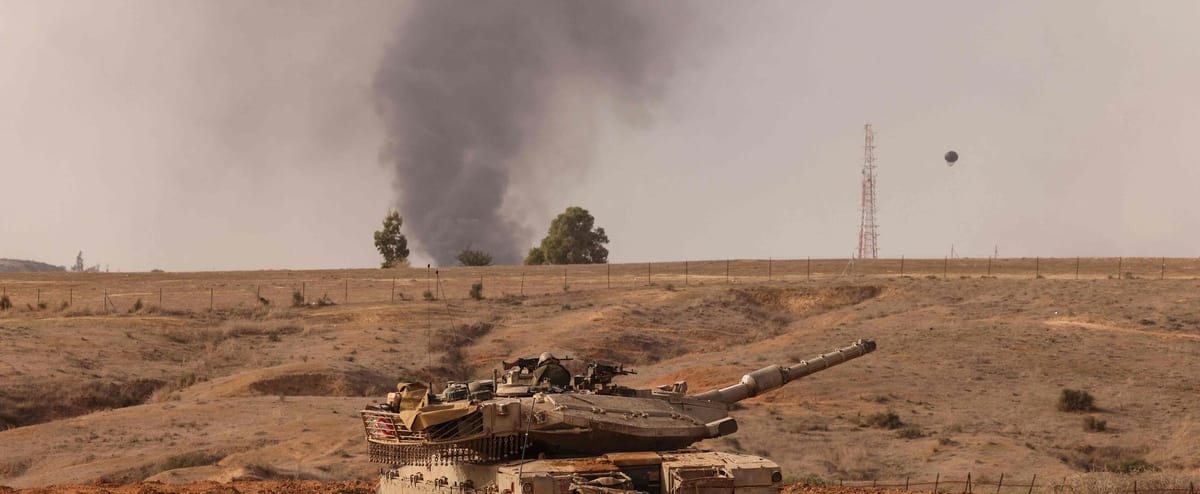An agreement was announced Wednesday on the release of hostages held in the Gaza Strip in exchange for the release of Palestinian prisoners and a truce in the war between Israel and Hamas.
• Read also: “This is not a war, it is terrorism”: the Pope denounces the armed conflict in Gaza
• Read also: Here is the list of Palestinian prisoners who could be released
• Read also: Swiss government decides to ban Hamas
Some 240 people were taken hostage during the bloody and unprecedented attack launched on October 7 by Hamas on Israeli soil, which sparked the war. They are detained in the Gaza Strip, where the Islamist movement took power in 2007 and which has since been shelled by the Israeli army, having vowed to “annihilate” the Islamist movement.
According to the Palestinian Prisoners Club, some 7,000 Palestinians are detained by Israel.
Here are the main points of the agreement, for which Qatar, Egypt and the United States acted as mediators.
- Listen to the interview with Tasha Kheiriddin, National Post columnist and director at Navigator via QUB radio :
Start and duration of the truce
Qatar said at 0330 GMT that a “humanitarian pause” would be announced “in the next 24 hours” and would last “four days, with the possibility of extension”.
According to several media, the truce should come into force on Thursday at 10:00 a.m. local (08:00 GMT).
The cessation of hostilities could take “some time” to be implemented on the ground, said the spokesperson for the Qatari Ministry of Foreign Affairs, Majed Al-Ansari.
A senior Hamas official told AFP he expected “a first exchange of 10 hostages for 30 prisoners to be carried out on Thursday”.
Terms
According to Israel, a first phase of the agreement concerns the release of 50 Israeli hostages against 150 Palestinians detained in Israel, during the four-day truce. The ratio of one hostage for three prisoners must always be respected, and at least 10 hostages released per day, according to Israel.
Then, other exchanges could take place according to the same terms as part of an extension of the truce, for the release of a total of 100 hostages for 300 Palestinian prisoners, again according to Israel.
“Prisoner lists are being exchanged and verified at the moment,” Taher al-Nounou, a senior Hamas official, said Wednesday afternoon.
According to Hamas, “the Red Cross and the United Nations will play a role” in the application of this agreement.
Throughout the truce, Israel must ensure the freedom of movement of people, particularly along the Salaheddine road, which crosses the territory from north to south, the Islamist movement demanded.
The agreement also provides for Israeli aircraft to stop flying over the south of the Gaza Strip for four days, and the north for six hours each day.
Hostages
Under the terms of the agreement, “50 women and children under the age of 19” hostages in the Gaza Strip will be released in return for the Palestinians, Hamas said.
According to Majed Al-Ansari, the Qatari spokesperson, the agreement does not include the release of the soldiers.
The hostages are in the hands of Hamas and Islamic Jihad, another Palestinian armed group which participated in the October 7 attack.
The United States expects three American nationals to be among the released hostages, a senior White House official said.
Palestinian prisoners
According to Hamas, 150 Palestinian prisoners, women and young people under 19, will be released.
Israel released a list of 300 prisoners: 33 women, 123 teenagers under 18 and 144 young people around 18, likely to be released in phases.
Among these hostages are 49 members of Hamas, 28 of Islamic Jihad, 60 of the Fatah movement of Palestinian President Mahmoud Abbas and 17 of the Popular Front for the Liberation of Palestine (PFLP).
Humanitarian convoys
According to Qatar, the truce must also allow the entry of “a greater number of humanitarian convoys and emergency aid, including fuel”, Gaza being faced with a total siege imposed by Israel.
“At least 200 to 300 trucks will enter, including eight fuel and gas trucks,” according to Taher al-Nounou.
